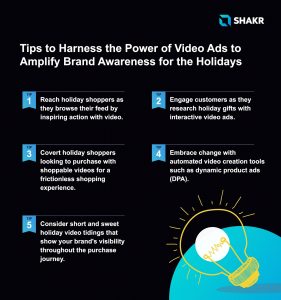Inbound links are the #1 search signal and when it comes to building links to a website, it’s easy to fall into SEO traps in the pursuit of higher search rankings as fast as possible. Black Hat SEO is essentially the dirty pool of search engine strategy. It’s the result of not considering the rules and gouging the system for all your can. As malicious as this sounds, it can happen without even realizing your mistakes. This is why we are here to provide lessons in white hat, gray hat, and black hat SEO designed to help you along your link building process.
Lesson #1: White Hat SEO
White hat is the squeaky clean, goodie two shoes of the SEO bunch, and can usually be very effective in elevating your site to the top of the search rankings. The key here is aiming for increased human interaction rather than merely a higher placement in search engines. Thus, this is the key difference between white and black hat SEO.
Say that you’re starting a website for Crossfit instruction. When you type the word “crossfit” into Google Adwords you get a high average monthly search total (around 1,220,000). So to narrow down your search a bit, you type in “crossfit training,” and see that it averages around 18,100 searches per month and a slightly higher suggest bid price. This could be the perfect focus keyword to use for the centerpiece of your link building strategy, since it’s obviously a search phrase that consumers are after. How would you then implement this phrase into your off-site SEO strategy? By utilizing the Skyscraper Approach.
White Hat SEO – The Skyscraper Approach
In this example, we know that there are about a million websites offering crossfit training services. In order to avoid getting your site buried on the 10th page of Google’s search rankings, you need to do your homework. You should be studying the content from competitor’s pages that are at the top of the rankings, then aiming to produce content that’s even better. This initial step within the Skyscraper Approach uses the analogy of trying to make your content the very best and most extensive it can be, like “the world’s tallest skyscraper.” If you were building a tower that everyone would remember, wouldn’t you study the design plans for the Sears Tower or the Burj Khalifa? In the world of SEO, we want to build the tallest ‘skyscraper’ imaginable, because no one will find us if we’re sitting on the 10th page of the search rankings, just like nobody cares about the 10th tallest skyscraper in the world.
The next step in this approach is producing content that effectively provides an update to the previously existing “tallest skyscrapers.” This isn’t about ripping off someone else’s material, but rather recognizing what viewers are craving, and producing your own version of content that can help you build backlinks. For example, if you see an article titled “20 Exercises To Learn For Your CrossFit Training,” you should try build something even better. Try “65 Exercises To Improve Your CrossFit Training.” Does 65 sound like a lofty goal? Well, this brings us to another important part of this strategy – reaching out to experts, influencers, and contributors who will want to assist you with your content creation.
These people are crucial to the Skyscraper Approach and to a successful white hat SEO strategy in general. Not only will they be able to provide invaluable expertise to make your content more authoritative, but they will also be more likely to share your finished product within their online community, thus expanding the number of links leading back to your site and skyrocketing you to the top of the search rankings. This could also lead to other lucrative opportunities for brand awareness and expansion. For example, an influencer might love your crossfit training article so much that they want you to impart your knowledge on their own audience. Where do you discover these potential influencers? Ahrefs and Majestic SEO are a couple great resources to begin your discovery of great content to emulate. Regardless of your approach, and there are tons of strategies for how to build backlinks, White Hat SEO adheres to Google’s webmaster guidelines and is the only true way to stay within Google’s good graces.
Lesson #2: Gray Hat SEO
Somewhere in the middle of the two SEO strategy extremes lies gray hat SEO. Opinions over its implementation are varied. Some consider it a great way to boost search rankings quickly, while others deem it a surefire way to get yourself placed in the search engine doghouse. But what is a private blog network? A PBN is a gray hat SEO approach where a network of blogs are owned by a single person that contain links which guide visitors outward to revenue-generating websites. Essentially, It’s a great way of peppering up your brand through a network owned by you.
Let’s say you want to run an ecommerce website for pool cleaning supplies. It could seriously help out your brand to set up various blogs with content about pool cleanliness, all tracing back to your primary website. Through proper link building, you can quickly increase the search engine placement of your main site, thus driving conversions. Now can you see why it’s called gray hat SEO? This definitely hits a gray area between best practices and dirty pool so proceed at your own risk.
Lesson #3: Black Hat SEO
When link building, you’ll want to avoid black hat SEO practices such as keyword stuffing, inserting invisible text, and including unrelated keywords in a nonsensical way within your content flow. By engaging in these harmful practices, you could face a harsh reprimand by Google. They have the power to eradicate your website from their search engines entirely, rendering all your efforts futile. How do you avoid this pitfall? Think about your optimization strategy in terms of connecting with other humans, i.e. potential consumers, rather than treating it like a race to the top of the rankings.
Black Hat SEO – Avoid Using Exact Match Anchor Text
Creating inbound links featuring exact match anchor text is a definite no-no. In the crossfit example, we wouldn’t want to litter our pages with the phrase “crossfit training,” hyperlinked back to our website too often. It can look like you’re trying to game the system, and Google always has their eye out for this practice and will punish most offenders.
Black Hat SEO – Avoid Link Buying
Many marketers will say that the practice of link buying has helped catapult their website to the top of Google’s search rankings. This may be accurate until you consider the enormous cost of buying links (sometimes in the $ 100’s), as well as the potential tarnishment to your brand. Real conversions are generated by real conversions. Viewers won’t want to engage with your content if they know your only support comes from robots. Just because you know people who have yet to be hit by Google’s penalties, doesn’t mean it can’t happen. As soon as they lower the hammer on your brand, consider it done.
Build Links Responsibly To Reap The Rewards
There’s no reason to do something risky that could result in harsh penalties for you and your brand. Build links organically by creating exceptional content for others to link to. If you can deliver sought after information to viewers in a unique way, you won’t have to resort to any dubious SEO practices, and you’ll find yourselves near the top of Google’s search rankings. Build your skyscraper the right way.
Digital & Social Articles on Business 2 Community(65)
Report Post




